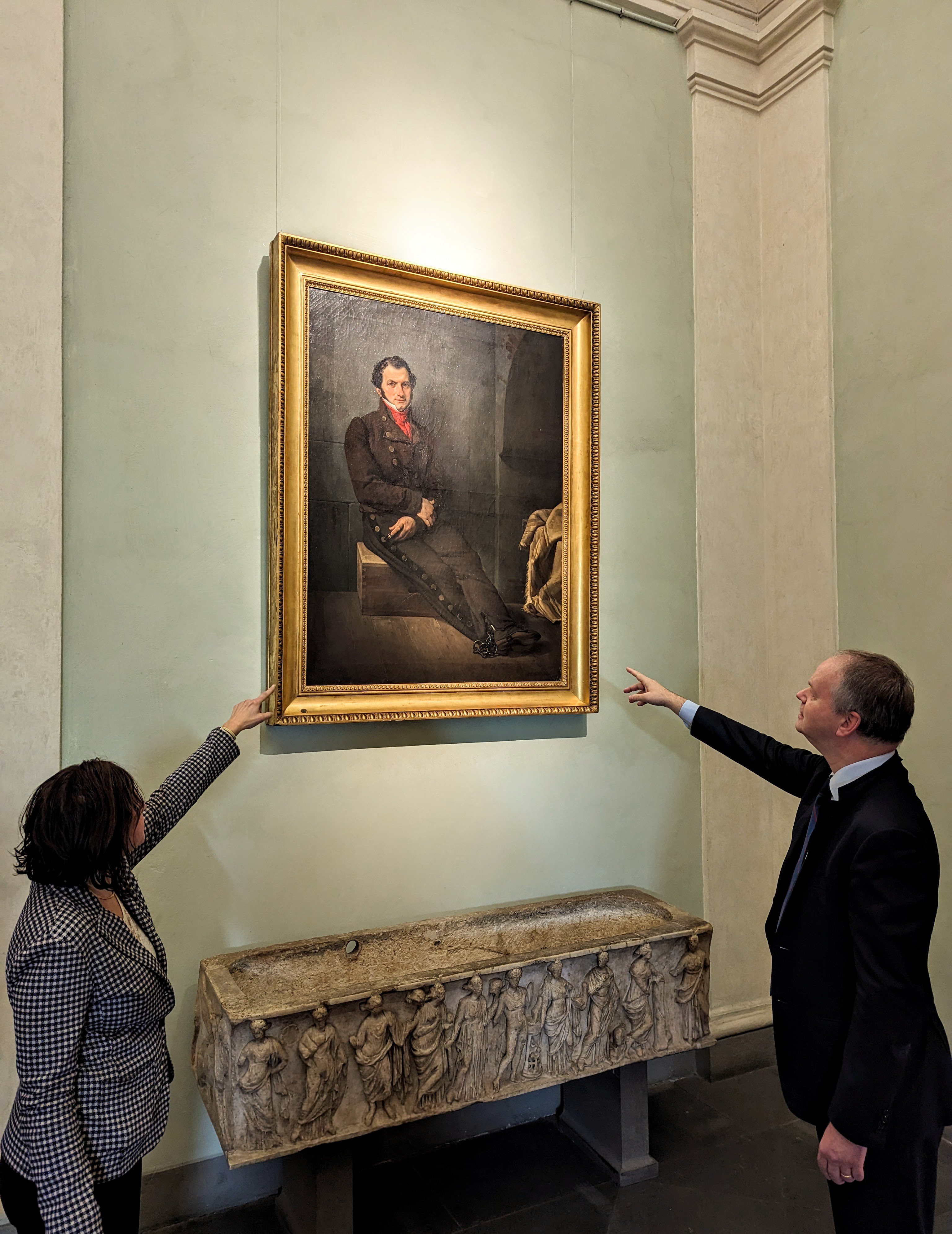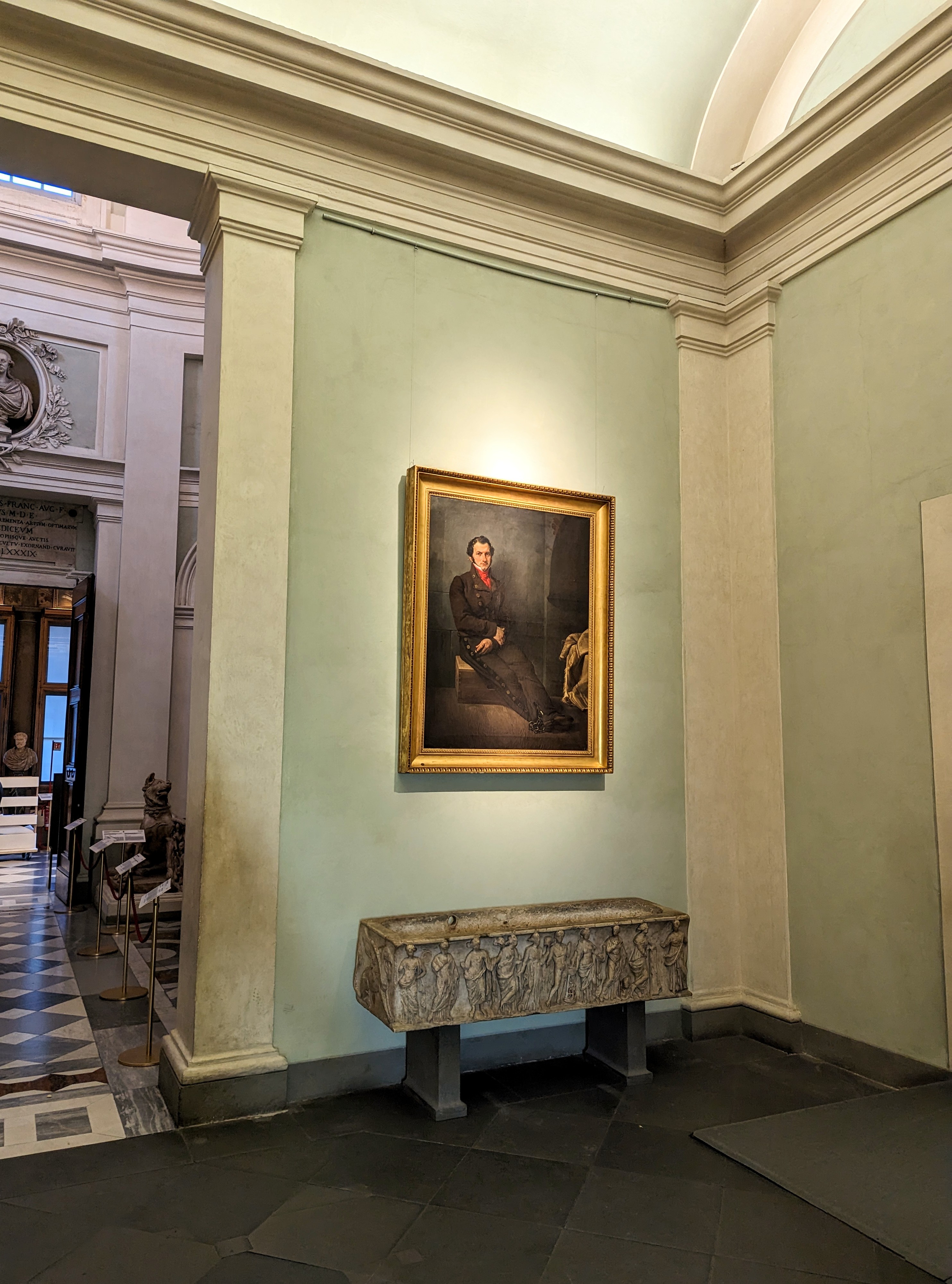Francesco Hayez, Portrait of Count Colonel Francesco Teodoro Arese Lucini in prison, 1828, Oil on canvas, 116 x 151 cm
Framing his figure, emphasizing the very harsh condition of the prisoner, is the squalor of the prison, the rough walls of the cell, the unmade bed, the chest used as a seat, the shackles that tighten his ankles.
Thus the great painter Francesco Hayez in the late 1820s he had portrayed Count Lucini in a painting that became famous for its very original story, as well as for its intrinsic expressive power.
From 1 January it will be possible to admire it at the beginning of the route of the Uffizi Galleriesat the top of the Lorraine staircase, while at the end of a “tour” in various Tuscan municipalities, which will take place in the spring, the portrait will be permanently exhibited in the modern art gallery of Palazzo Pitti.

Francesco Hayez, Portrait of Count Colonel Francesco Teodoro Arese Lucini in prison, 1828, Oil on canvas, 116 x 151 cm
The acquisition of Portrait of Count Colonel Francesco Teodoro Arese Lucini in prison by Hayez allows the Florentine Galleries to enrich their heritage with a fundamental work, not only for its pictorial value, but also for its strong historical and political significance in relation to the Risorgimento uprisings. In this oil on canvas, which is characterized by its revolutionary charge, Hayez’s ability emerges, one of the major interpreters of Italian and international Romanticism, to express the hopes, and at the same time the disappointments, of the Italian Risorgimento.
The “noble gentleman”, as Hayez himself had defined Arese Lucini, as a member of the aristocracy, wanted to break the strict conventions of portraiture by choosing to be depicted in chains (although by the time the painting was executed the sentence had already effectively ended ). A former Napoleonic colonel, active in the Risorgimento uprisings of 1820-21, who ended up on trial and was sentenced to death two years later, the count wanted to entrust an attempt at social redemption to the ingenious touch of the Lombard painter.
The death penalty had in fact been converted into three years of detention in the lugubrious Austrian penitentiary of Spielberg (the same one in which Silvio Pellico wrote My Prisons), after that, during the trial, the count colonel had told the court everything he knew about the other accused, justifying himself with his alleged inability to lie.

Francesco Hayez, Portrait of Count Colonel Francesco Teodoro Arese Lucini in prison, 1828, Oil on canvas, 116 x 151 cm
“Arese – comments the director of the Uffizi Galleries Eike Schmidt – convicted of having participated in the failed anti-Austrian uprisings of 1820-21, revealed the names of the conspirators and Federico Confalonieri, professing an impossibility of lying which certainly saved him from condemnation to death, but not from years of harsh prison which seriously undermined his health. The painting admirably summarizes the count’s story and reasons, but above all it offers Francesco Hayez, the greatest painter of Italian Romanticism, the opportunity to measure himself with the psychology of the character and to offer one of the highest proofs of his pictorial production. The Uffizi Galleries are thus enriched with a masterpiece reproduced in the most important texts on the nineteenth century”.
By choosing to be immortalized by Hayez as a “prison martyr”, Arese-Lucini succeeded in fact, with great communicative effectiveness, in transmitting to public opinion an image of his prison conditions, such as to dissolve any shadow and doubt about his own procedural behavior . The protagonist of the painting was also a passionate collector and a generous patron. In the course of his life, in fact, Lucini was able to come into possession of other masterpieces by Hayez, such as the first lost version of the While the Count of Carmagnola is about to be led to execution, he recommends his family to his friend Gonzagalast scene of the tragedy by Alessandro Manzoni, in addition to Portrait of Carlo Prayer in the character of Alp (The Venetian renegade).

